Walkabout: Brooklyn’s Freewheeling Summer
Read Part 2 of this story. The Sunday, April 3, 1898 edition of the Brooklyn Daily Eagle features a special eleven page pull-out illustrated section devoted solely to the recreational sport that had captured the city – bicycling. It was probably the most comprehensive look at the phenomenon of cycling ever assembled in a newspaper…
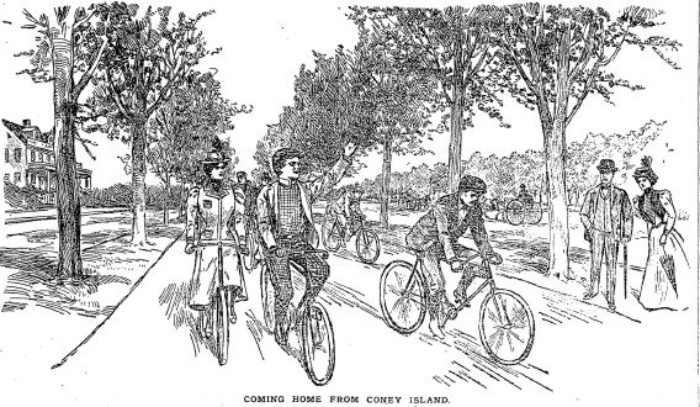

Read Part 2 of this story.
The Sunday, April 3, 1898 edition of the Brooklyn Daily Eagle features a special eleven page pull-out illustrated section devoted solely to the recreational sport that had captured the city – bicycling. It was probably the most comprehensive look at the phenomenon of cycling ever assembled in a newspaper before or since, and highlights cycling when it was at its peak, the first time around.
There were articles about advances in bicycle design and new accessories and innovations. The article featured a section about the newest cycling outfits for men and women. There was a story about long distance cycling trips, some as far away as Saratoga Springs, as well as shorter day trips within the five boroughs, Long Island and Westchester.
The state of roadways and the acceptance of bicycles as transportation were discussed, as was the political will to improve the pathways and streets for bicycle traffic. They wrote about the many different clubs that had formed, and lastly, there was even an article about trick riding, with illustrations. It’s fascinating, and one cannot help but make comparisons to the phenomenon of cycling in New York in 2014.
A couple of years ago, I wrote a series about the history of the bicycle and Brooklyn cycling, which can be found in the links at the end of this article. I did not have this particular article in hand at that time, which encapsulates the phenomenon of cycling so well. There are so many parallels to today, yet so many differences. Plus we have the advantage of the long view of history. As popular as cycling was in 1898, within five years or so, the automobile would take over the popular imagination and cycling in Brooklyn would take a permanent back seat to the car for over a hundred years, before rising like a phoenix once again. Here are some highlights of that 1898 article.
The bicycle has been a part of most of our childhoods, going back generations. If you grew up in a small town, in the country, or a suburb, chances are you spent your childhood on a bicycle. Many city kids also learned to ride at a young age. But for the late Victorians, cycling was a relatively new phenomenon, and most people learned to ride as adults. Something special happened because of the bicycle. Cycling was one of the few recreational activities that men and women could take part in, more or less equally, and together. For that reason alone, the sport changed society.
By 1898, the design of the bike, as we know it today, was pretty much set. A good bike cost between $25 and $50, making it affordable to the middle classes. A host of manufacturers produced fixed gear bikes, which were the standard, as well as early multi-geared racing bikes. The frames, seats and pedals haven’t changed much in the last hundred years. By this time, bikes had inflatable rubber wheels, and a repair kit was a must have for any serious rider, as the roads and streets could be pretty atrocious. Bikes even had head lamps for riding at night, mounted on the frame between the handlebars, and several models were advertised in the Eagle.
In addition to standard bikes, there were specialty bikes of all kinds. Tandem cycles were very popular for couples, but they also made multi-seat racers that held up to six riders. There were bikes that pulled baby carriages and bikes for all kinds of work situations, with carts and hanging attachments. The paper had a special article about bicycles outfitted for combat. One three wheeled model was a tandem cycle that pulled a machine gun and had ammo pockets on the side. The two soldiers could pedal to battle, set up the gun and start firing, and then move easily to another location. There was little cover provided by the bike however, but it precludes the machine gun mounted Jeep by at least 40 years. Someone thought of everything, including a tandem ambulance bike; two parallel cycles with a frame holding a tented pallet between them.
But most of the pages were filled with happier topics. Like today, many cyclists wanted to use their bikes to exercise and to get away from the hot and dangerous streets of the cities. By the turn of the 20th century, most streets and roads were being paved, and macadam, or what we know as asphalt or blacktop gravel and tar roadways, was replacing dirt roads and cobblestone streets. This was a perfect cycling surface, but it was not yet everywhere.
Riding in the parks, especially Prospect Park was a goal of most of Brooklyn’s cyclists. They were lucky to have an eager ally and fellow biking enthusiast in charge of Parks. His name was Timothy L. Woodruff, and he was appointed Brooklyn Parks Commissioner in 1896. Woodruff was a wealthy businessman, political animal, and sporting enthusiast. He was a leader of the Republican Party in the State of New York, and was elected Lieutenant Governor of the state three separate times under three different governors, including Teddy Roosevelt.
He made his fortune on the Brooklyn docks, owning storage warehouses and grain elevators. His company, the Empire Warehouse Company became the Brooklyn Grain Warehouse Company in 1889. He also was in banking and was president of the Maltine Manufacturing Company and the Smith Premier Typewriting Company, among other business concerns. This all gave him plenty of money to indulge in his love of horses, bicycles and fishing. His summer home in the Adirondacks gave him a love for the outdoors which would lead to Adirondack land preservation and Brooklyn bike trails.
While Brooklyn Parks Commissioner, Woodruff was able to institute the first dedicated bike paths in Prospect Park, as well as trails leading from the park to Coney Island. He instituted bike lanes down Flatbush, Fort Hamilton and Ocean Avenues. He lived in Park Slope, and was a dedicated city horseman, and so joined recreational riders’ concerns with those of bikers. He built rest stops for men and beasts, with drinking fountains and benches.
Woodruff was one of the men associated with the Good Road Association, a group of city officials and private citizens all advocating for the improvement and paving of all of the city’s streets. The “wheelmen” as cyclists were known, were the biggest boosters for this group, and worked hard to get the city to get streets paved in a speedy and timely manner. A map printed in the Eagle bike section showed that in 1898, there was still a long way to go as far as getting the streets in order. Bicyclists had their own agenda in getting this done, for sport racing, as well as for casual recreational riding.
Subsequent Parks and Transportation commissioners worked for more, and better built bike paths and paved roads. Their efforts to get bikes included into the permanent planning of the city’s streets are very reminiscent of the efforts made in the last ten years by the Bloomberg administration to get bike lanes in the city. It’s interesting to note that had the bike lanes instituted by officials by 1900 remained in place, the Mayor would have had far less problems with his bike lanes; many of them would have been institutions already. But when the automobile showed up, most of the cyclists, especially the young and the wealthy, dropped bikes for cars and never looked back. The lanes were turned over to cars. It would take a hundred years for the bike to make a mass comeback.
The bicycle might have been a fad for many, but it was serious business for more than a few. There were bicycle clubs everywhere, hundreds of them in the entire five boroughs, Long Island and Westchester. There were also regional and national organizations. Many clubs were loose gatherings of biking enthusiasts who would organize to have bike tours and excursions. They would meet in someone’s home, church, or perhaps in club rooms at the many local meeting halls that existed in every neighborhood. Some clubs were much more, with permanent rooms in a hall, or even their own club building. These groups gathered to plan outings and tours, but their real reason for existing was racing and long marathon bike trips. Not to mention socializing in their clubs.
Next: In the conclusion of this story, more on the biking clubs, and the most important detail of all – the proper biking attire for men and women. A serious biker did not just hop on his bike in his every day clothing. He and she needed to be kitted out in style. And like the peacock and the peahen, the men were much flashier than the women.
(Cycling home from Coney Island. Brooklyn Eagle, 4.1898)
Knights of the Knickerbockers, Part One
Knights of the Knickerbockers, Part Two

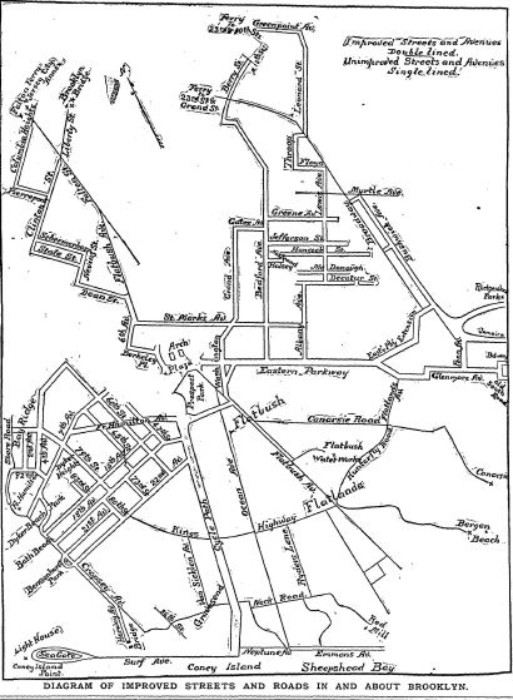
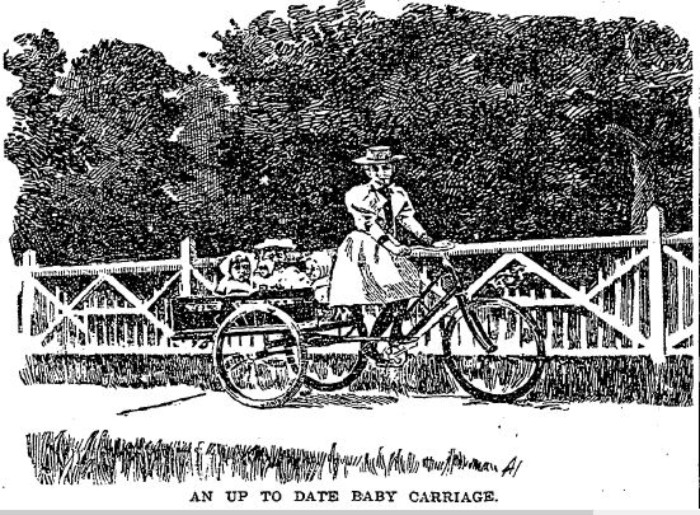
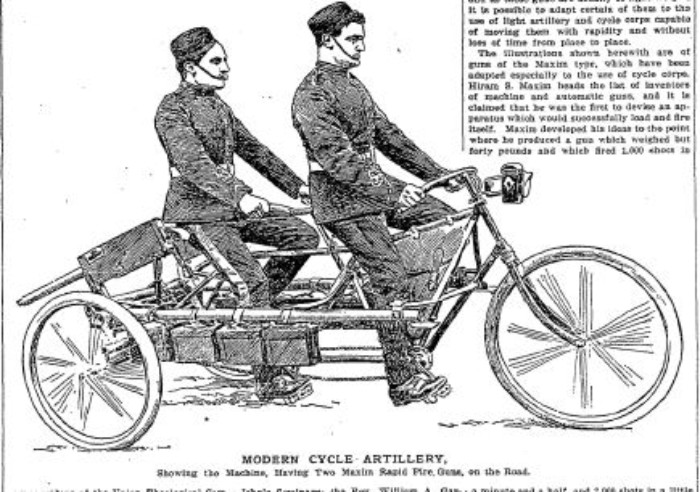
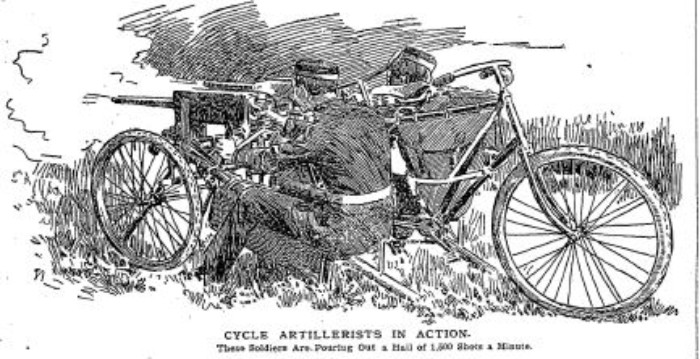
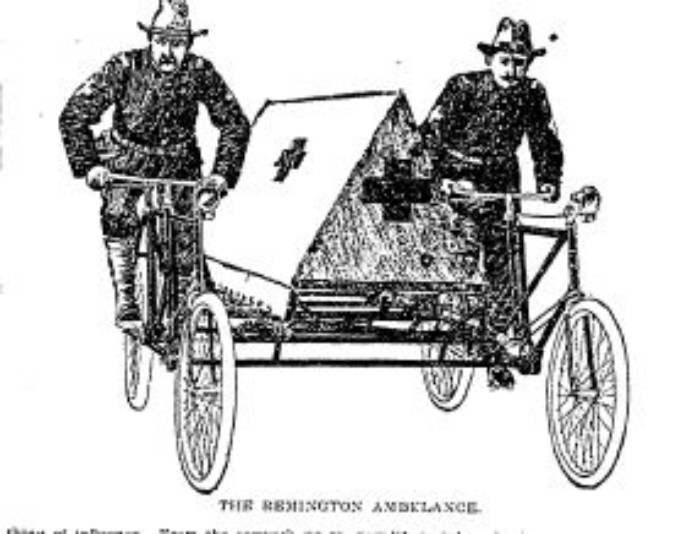
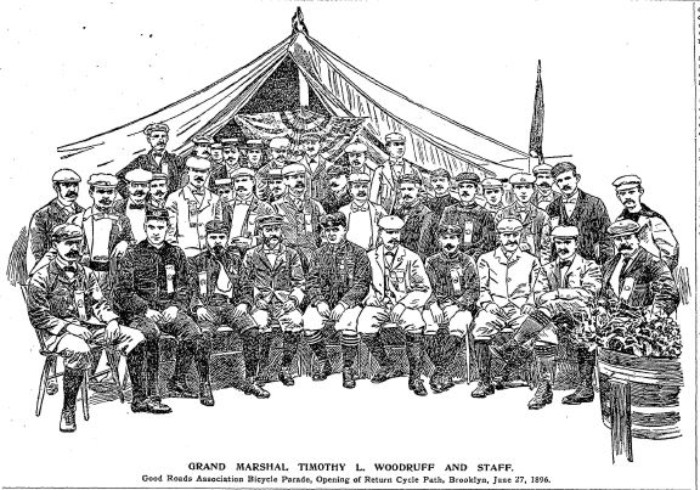
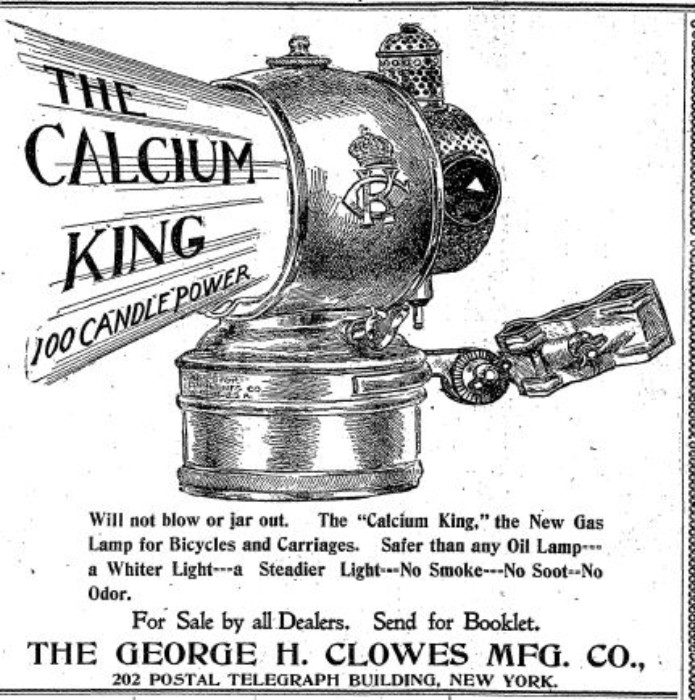

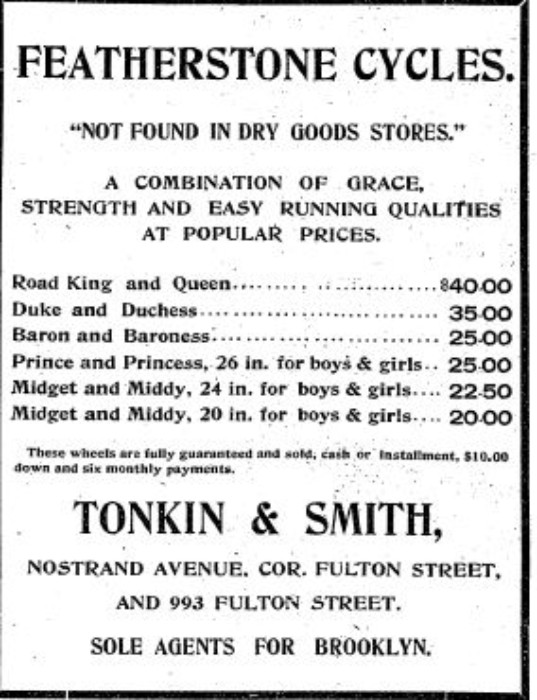









What's Your Take? Leave a Comment